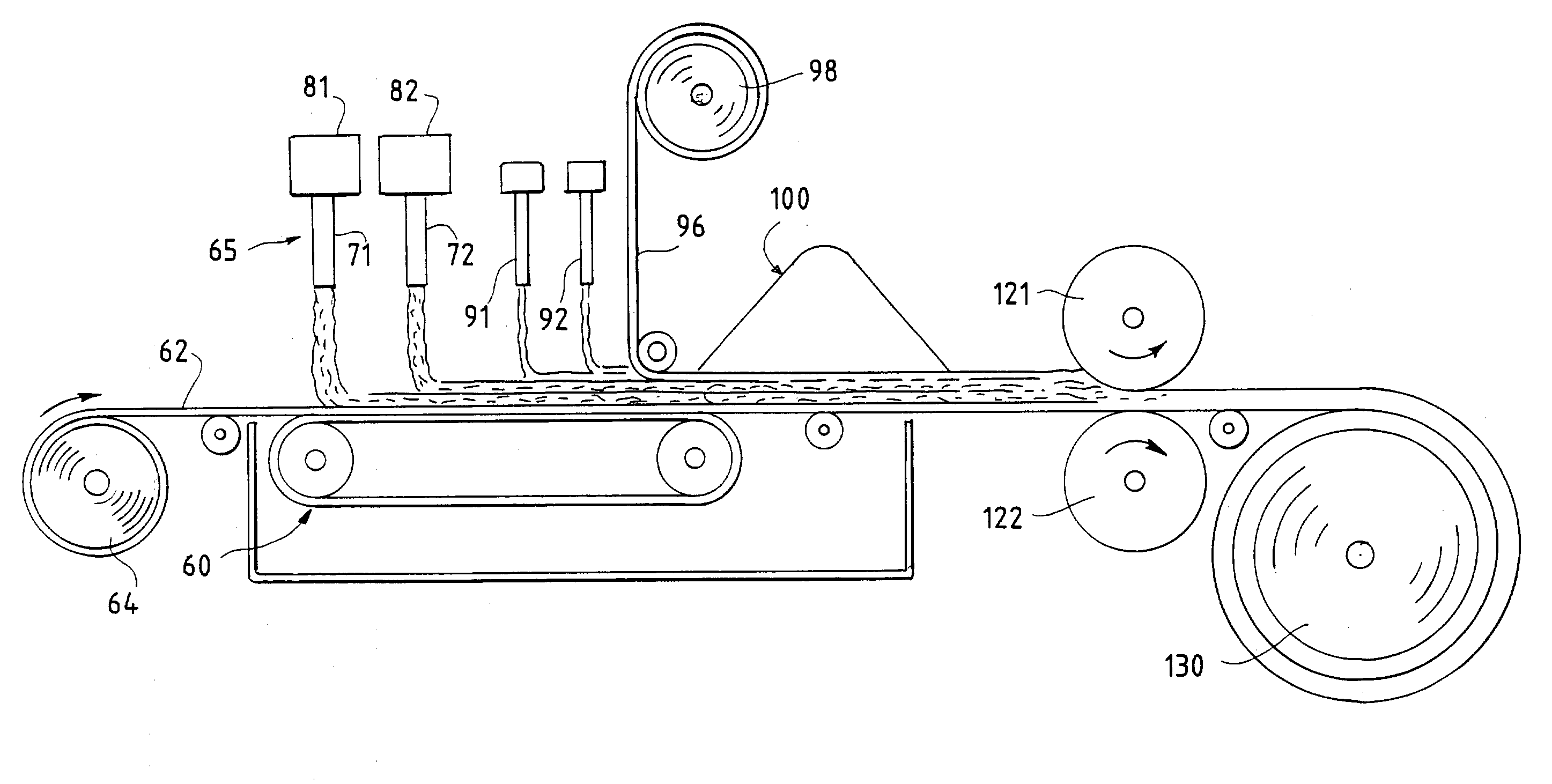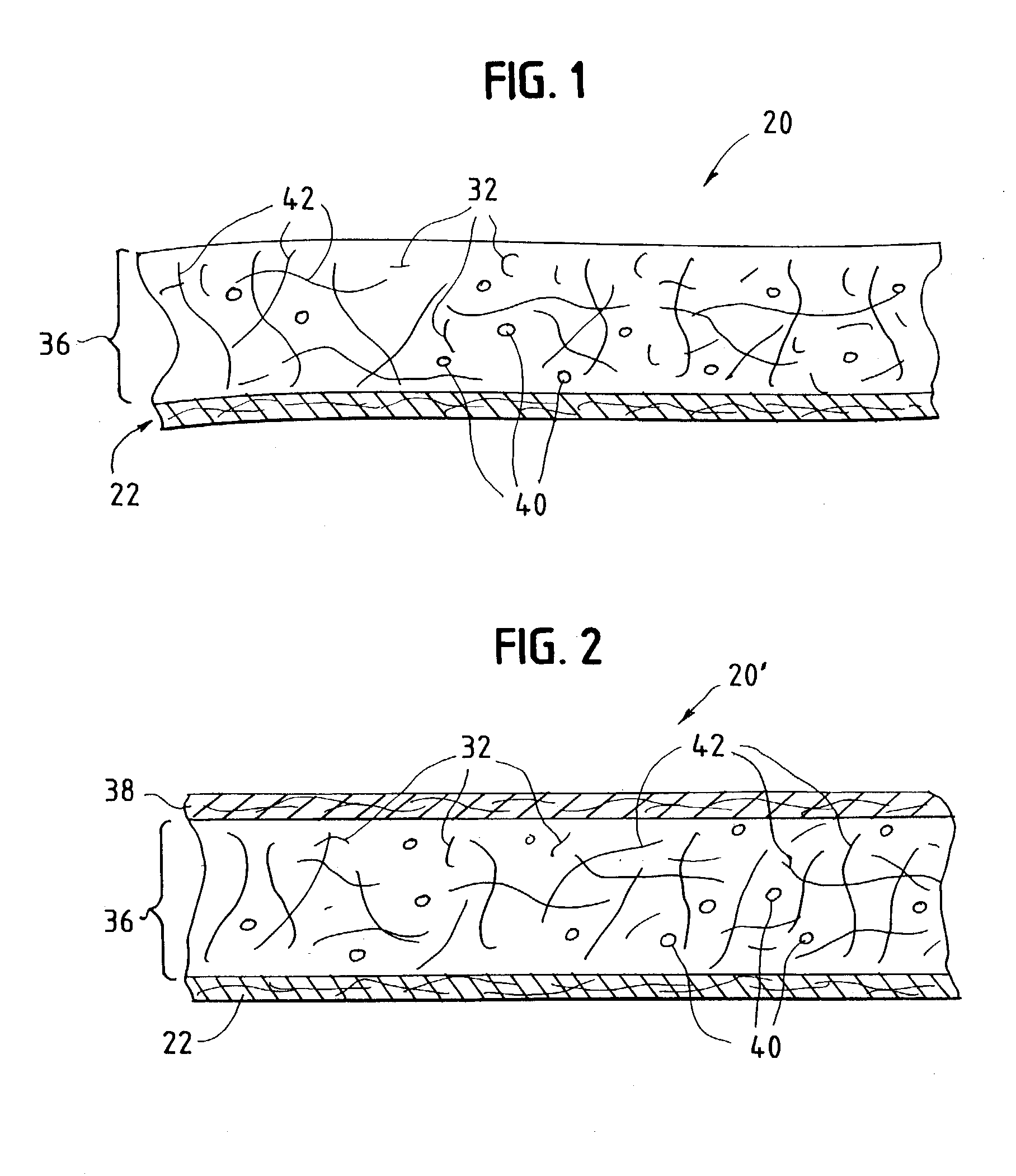Absorbent material incorporating synthetic fibers and process for making the material
a technology of absorbent materials and synthetic fibers, applied in the field of absorbent materials, can solve the problems of increasing the cost of absorbent material products, requiring additional manufacturing steps, and requiring wood pulp manufacturers to perform time-consuming and expensive procedures during wood pulp preparation steps, and achieve the effect of reducing leakag
- Summary
- Abstract
- Description
- Claims
- Application Information
AI Technical Summary
Benefits of technology
Problems solved by technology
Method used
Image
Examples
example 1
[0125] In Example 1, the form of the present invention illustrated in FIG. 1 was made by the process generally illustrated in FIGS. 6-8 with a variety of different synthetic polymer fiber compositions listed in Table I.
[0126] The various specimen rolls of absorbent material were made by initially partially forming the web of material in a first stage on the apparatus shown in FIG. 6, then subsequently running the partially completed web again in a second stage of the process on the apparatus as shown in FIG. 7. Subsequently, the second stage web was embossed in a third stage on a processing line as shown in FIG. 8. The processing line shown in FIGS. 6 and 7 is generally similar to the above-described preferred processing line illustrated in FIG. 3. The processing line shown in FIGS. 6 and 7 includes the carrier web roll 64 from which is drawn a carrier web 62 over an endless screen 60 located under a series of forming heads 65, including a first forming head 71 and a second forming ...
example 2
[0149] In Example 2, specimens of the present invention having a configuration illustrated in FIG. 2 were made and evaluated. The structure in FIG. 2 includes a cover layer 38 in addition to the carrier layer 22 attached to the primary absorbent portion or core 36. The specimens were produced according to the two-stage process illustrated in FIGS. 9 and 10. Material formed by the first stage of the process illustrated in FIG. 9 is wound on a roll 148 and is used as the beginning roll in the second stage of the process illustrated in FIG. 10.
[0150] The first stage of the process illustrated in FIG. 9 is similar in many respects to the preferred process described above with reference to FIG. 3. In particular, in the first stage of the process illustrated in FIG. 9, the carrier layer web 62 is unwound from a roll 64 and is directed onto an endless screen 60 over which is forming station 65 having a forming head 71 and forming head 72 each connected with a blending system 81 and 82, res...
PUM
| Property | Measurement | Unit |
|---|---|---|
| density | aaaaa | aaaaa |
| density | aaaaa | aaaaa |
| density | aaaaa | aaaaa |
Abstract
Description
Claims
Application Information
 Login to View More
Login to View More - R&D
- Intellectual Property
- Life Sciences
- Materials
- Tech Scout
- Unparalleled Data Quality
- Higher Quality Content
- 60% Fewer Hallucinations
Browse by: Latest US Patents, China's latest patents, Technical Efficacy Thesaurus, Application Domain, Technology Topic, Popular Technical Reports.
© 2025 PatSnap. All rights reserved.Legal|Privacy policy|Modern Slavery Act Transparency Statement|Sitemap|About US| Contact US: help@patsnap.com



